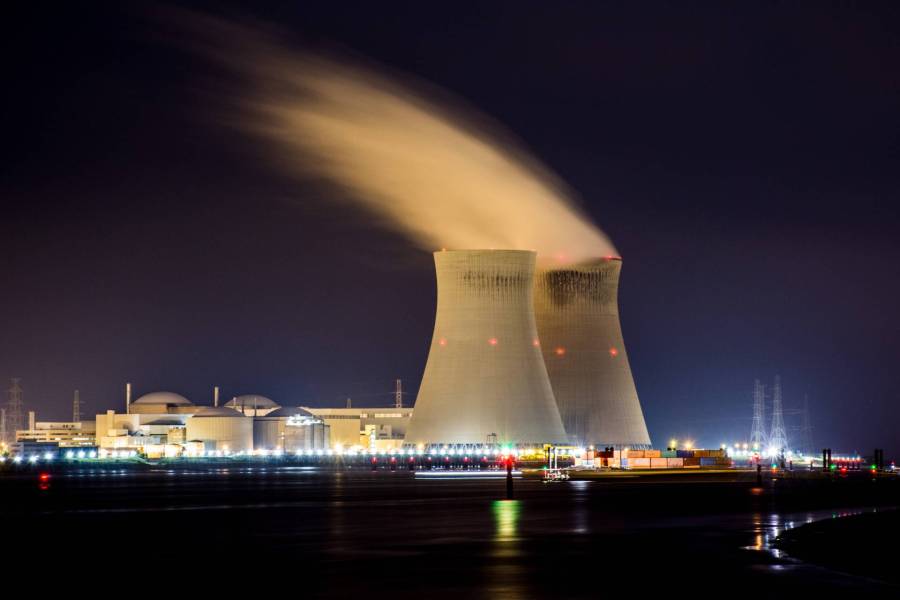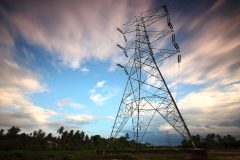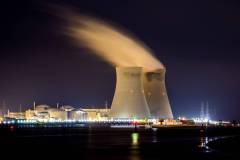X-energy, a leading firm in the development of advanced nuclear reactors, has just announced a ground-breaking partnership with Energy Northwest, signaling a major step forward for the future of clean energy. The deal calls for the installation of up to 12 small modular reactors (SMRs) with cutting-edge technology in Central Washington. X-energy had previously abandoned its original project in the state, so this unexpected collaboration represents a change in strategy. X-energy has recommitted itself to nuclear power in an effort to mitigate climate change and lower carbon emissions.
The Xe-100 advanced small modular reactors will be built by X-energy at a site in Richland, Washington, as per the terms of a joint development agreement between the two companies. The chosen location is close to the state’s only commercial nuclear power plant, the Columbia Generating Station. This strategic placement maximizes the new reactors’ potential contribution to Washington’s clean energy goals through their seamless incorporation into the existing infrastructure.
If all 12 reactors are built without incident, they could produce 960 megawatts of electricity. The agreement stipulates that the first reactor will be operational by 2030, significantly increasing the region’s access to clean, reliable, and cost-effective electricity.
As the world works to reduce its use of carbon-emitting fossil fuels, interest in nuclear energy has resurfaced. The advanced small modular reactors developed by X-energy present a promising solution because they are safer, cheaper, and less hazardous to the environment than older nuclear power plants. These reactors generate carbon-free energy through nuclear fission, the controlled splitting of atoms, and produce only negligible amounts of radioactive waste.
While renewable energy sources like wind and solar have seen significant growth, the integration of energy sources that can operate around the clock is necessary to meet the demand for continuous, baseload power supply. This need can be met by a combination of nuclear power, hydroelectric dams, batteries, and other technologies, all of which contribute to a more sustainable and reliable electrical grid.
Energy Northwest’s mission is to provide the Pacific Northwest with electricity that is both affordable and environmentally friendly. Working with X-energy makes sense in light of this goal, as their cutting-edge Xe-100 small modular reactors (SMRs) will be a welcome addition to their arsenal of carbon-free power sources. Energy Northwest CEO Bob Schuetz is very enthusiastic about the partnership, and he cites the benefits that X-energy’s technology will provide in terms of achieving the region’s sustainable energy goals.
The partnership with Energy Northwest is not the only business venture for X-energy. X-energy is moving forward with plans to install its first Xe-100 reactors at an already established Dow industrial site in Texas, per the terms of an agreement with Dow, a global chemical giant. The Advanced Reactor Demonstration Program (ARDP) is an initiative of the United States Department of Energy with the goal of facilitating the introduction of advanced nuclear reactors.
The Department of Energy has granted X-energy $1.2 billion to help with the building of the demonstration plant. By working together with Dow, X-energy has taken a major step toward realizing advanced small modular reactors as a viable and sustainable energy source, with construction scheduled to begin in 2026 and be completed by 2030.
Bill Gates’ TerraPower, a pioneer in the field of next-generation nuclear power, is also making significant progress in the area of advanced nuclear reactors. On the site of a retiring coal plant in Kemmerer, Wyoming, the company has announced plans to construct its first demonstration plant. Approximately $2 billion of this ambitious $4 billion public-private venture’s funding comes from the same DOE program that supports X-energy.
TerraPower plans to investigate additional sites for up to five of its reactors outside of the Wyoming project. Although the specific locations have not been disclosed, the feasibility study shows that TerraPower is serious about growing its presence in the emerging nuclear power sector.
Finding a reliable source of reactor fuel is a problem for both X-energy and TerraPower. Russia produces all of the world’s HALEU (high-assay, low-enriched uranium fuel) right now. However, because of international tensions, this information is no longer trustworthy. Because of this, TerraPower and Centrus Energy have announced that they will be working together to bring HALEU manufacturing to the United States. Together, Centrus and TerraPower hope to increase HALEU production at their Ohio facility, which should help alleviate any fuel shortages TerraPower may experience.
But X-energy has plans to build its own fuel production facility in Tennessee, so that its reactors always have a steady supply of fuel. These actions show that both organizations are serious about resolving fuel supply issues and improving the long-term viability of their projects.
In conclusion, the joint development agreement between X-energy and Energy Northwest is an important step forward for the expansion of sustainable power sources. X-energy’s plans to build up to 12 advanced small modular reactors in Washington State position the company to help the state and region meet their clean energy goals. X-energy and TerraPower are both working on cutting-edge methods of mitigating climate change, and their partnership highlights the increasing attention paid to nuclear power’s next generation. These businesses are laying the groundwork for a cleaner and more sustainable energy future by harnessing the power of nuclear fission and addressing challenges with fuel supply.
First reported on GeekWire
Frequently Asked Questions
Q. What is the significance of X-energy’s partnership with Energy Northwest?
The partnership with Energy Northwest represents a major step forward for the expansion of sustainable power sources. X-energy’s plans to build up to 12 advanced small modular reactors (SMRs) in Washington State will contribute significantly to the state and region’s clean energy goals. The advanced SMRs are safer, cheaper, and less hazardous to the environment than older nuclear power plants, making them a promising solution to reduce carbon emissions.
Q. How does X-energy’s Xe-100 advanced small modular reactor work?
The Xe-100 advanced small modular reactor generates carbon-free energy through nuclear fission, the controlled splitting of atoms. It produces only negligible amounts of radioactive waste, making it a more environmentally friendly option compared to traditional nuclear power plants.
Q. What are the benefits of using nuclear energy as part of a sustainable energy mix?
While renewable energy sources like wind and solar have seen significant growth, nuclear power plays a crucial role in providing continuous, baseload power supply. Combining nuclear power with other technologies like hydroelectric dams and batteries contributes to a more sustainable and reliable electrical grid.
Q. How are both X-energy and TerraPower addressing the issue of fuel supply for their reactors?
Both X-energy and TerraPower are taking measures to ensure a reliable supply of reactor fuel. TerraPower is partnering with Centrus Energy to bring HALEU (high-assay, low-enriched uranium fuel) manufacturing to the United States. X-energy, on the other hand, plans to build its own fuel production facility in Tennessee, ensuring a steady supply of fuel for its reactors.
Q. What is the significance of TerraPower’s plans to build its first demonstration plant in Wyoming?
TerraPower’s plans to construct its first demonstration plant in Wyoming mark a significant milestone in the development of advanced nuclear reactors. The project is funded in part by the United States Department of Energy’s Advanced Reactor Demonstration Program and shows TerraPower’s commitment to growing its presence in the emerging nuclear power sector.
Q. How does the collaboration between X-energy and Dow in Texas contribute to advanced nuclear reactor development?
The collaboration between X-energy and Dow to build Xe-100 reactors at a Dow industrial site in Texas is part of the Advanced Reactor Demonstration Program (ARDP) by the Department of Energy. With the DOE’s support, X-energy is taking a major step towards demonstrating the viability and sustainability of advanced small modular reactors.
Q. What are the potential benefits of advanced small modular reactors (SMRs) for the clean energy future?
Advanced small modular reactors have the potential to provide clean, reliable, and cost-effective electricity while mitigating climate change and lowering carbon emissions. Their advanced technology makes them safer and more environmentally friendly than older nuclear power plants, making them a valuable addition to the clean energy mix.
Q. How are X-energy and TerraPower contributing to the development of the next generation of nuclear power?
Both X-energy and TerraPower are at the forefront of developing advanced nuclear power technologies. X-energy’s advanced small modular reactors (SMRs) and TerraPower’s innovative approaches to nuclear fission demonstrate their commitment to creating cleaner and more sustainable energy solutions. Their partnerships and investments in fuel supply solutions further solidify their position as pioneers in the field of sustainable nuclear power.
Featured Image Credit: Unsplash


















